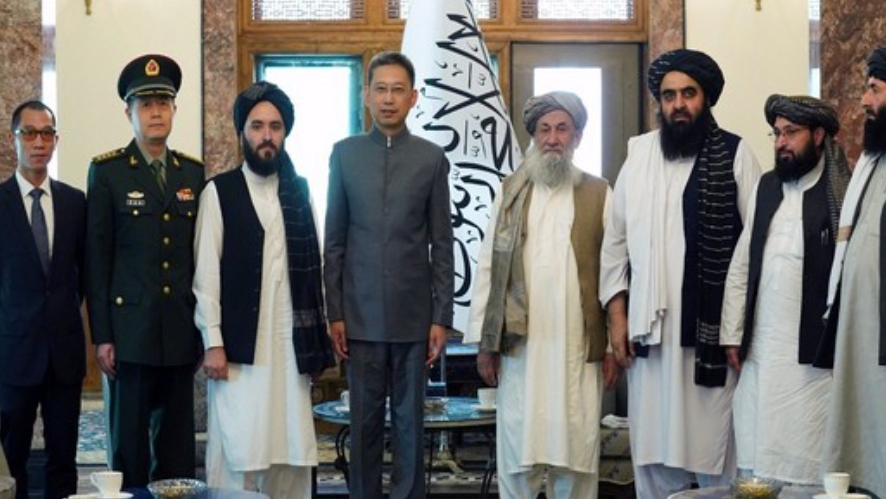More complications for India in new phase of Ukraine conflict
- SIS Blog

- Oct 4, 2022
- 4 min read
Updated: Oct 6, 2022

By Prof. Gulshan Sachdeva
With hardened western stance, India’s room for maneuvering is going to be much more limited in the new phase of the Ukraine conflict. In the meanwhile, India-Russia energy trade has become stronger.
While signing the accord to annex four Ukrainian regions namely Donetsk, Luhansk, Kherson, and Zaporizhzhia, the Russian President Vladimir Putin announced that people living in these regions “have become our citizens, forever”. He further asserted that “we will defend our land with all the forces and resources we have”. To a large extent, it seems this is Russia’s response to its recent military setback at Kharkiv.
The European Union has rejected what it calls ‘illegal’ referenda and annexation and said that it will “continue to provide strong economic, military, social and financial support to Ukraine”. Similarly, while condemning Russia’s attempts, the United States has announced that it “will continue to support Ukraine’s efforts to regain control of its territory by strengthening its hand militarily and diplomatically”.

These new developments complicate an already difficult situation. It also indicates further escalation in the conflict. Already the nuclear issue has entered into the rhetoric. With the damage to Nord Stream pipelines, the conflict has also entered a new phase of hybrid war threatening European energy infrastructure.
As the war enters into a new phase, India will again have to weigh its options. While Prime Minister Narendra Modi sharpened New Delhi’s response emphasizing that this is ‘not an era of war’, India’s fundamental position on Russia’s role and conflict has not changed much. This was clearly evident through another abstention at the recent UNSC vote on Ukraine. At the open UN briefing on Nord stream pipeline sabotage, India also called for an “independent and objective investigation” of the incident.
At the UNSC vote, India was “deeply disturbed by the turn events in Ukraine” not clearly mentioning referendum and annexation. This could also mean that India is also disturbed by huge western military support to Ukraine, which has reduced chances of a political settlement.
Indian dependence on Russian military hardware has always been mentioned as one of the factors responsible for New Delhi’s reluctance to condemn Moscow for its actions in Ukraine. In the meanwhile, energy trade has also become stronger.
Thanks to discounted oil purchases in the last few months. India-Russia bilateral trade between April and July 2022 was about $14 billion. This is more than India’s trade with countries such as Singapore, Australia, Germany, Japan or Netherlands during this period. As a result, Russia has emerged as the seventh largest trading partner of India during this period.
Last year, Russia was India’s twenty-fifth trading partner. Now to boost Indian exports to Russia, the State Bank of India has also agreed to facilitate Rupee trade transactions to Russia. Although this is a dynamic situation with increasing sanctions against Moscow, Russia may emerge as India’s top ten trading partners in the current financial year.
Strategic and defense ties with Russia were always strong. It was the commercial pillar which both countries were not able to revitalize. Despite sanctions, Russia will continue to be a major energy producer and exporter. Now the European Union and most of its Member States have clearly decided to diversify their energy imports away from Russia. Moscow clearly needs new energy markets for its exports, mainly in Asia. Apart from China, India could emerge as another major buyer of Russian energy in the coming years. Because of trusted strategic partnership, there is a clear potential of working out bilateral payment mechanisms and required infrastructure linkages in the coming years. With stronger partnership with India, Russia can also balance its dependence on China.
This is not a conflict between Russia and Ukraine. Major western powers and NATO are clearly involved in a major way. Ukraine has no chance of getting membership of the European Union and NATO in the coming years. Still the West will continue to support Kiev militarily and financially so long as it is able to fight. So basically, this is a war between major economic and military players. Both sides also have seats in the UNSC. The conflict has also revitalized NATO as well as the Trans-Atlantic alliance. Now the West is looking for a ‘strategic defeat’ of Russia and a possible regime change in Moscow. In these circumstances, ‘victory’ or compromise for any one side is not going to be easy.
India has close strategic ties with both sides and good relations with Ukraine. Still, due to the current nature of the conflict, room for playing a mediatory role for New Delhi is limited. So far, India has managed well in taking a ‘neutral stance’ and protecting its interests. As the conflict is entering another phase, the room for maneuvering is going to be much more limited due to a hardened western stance.
Originally published: Economic Times, October 03, 2022
Posted here with the authorization of the author.
Gulshan Sachdeva is Professor at the Centre for European Studies and Coordinator, Jean Monnet Centre of Excellence, Jawaharlal Nehru University







